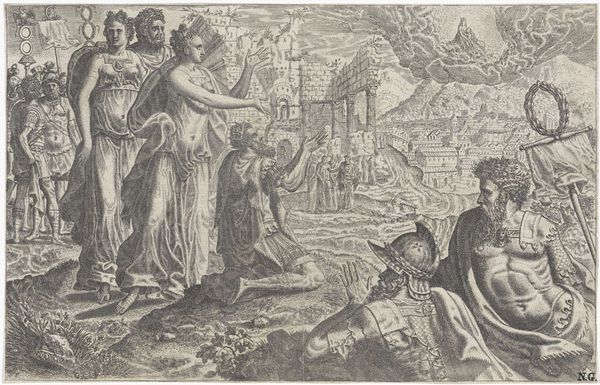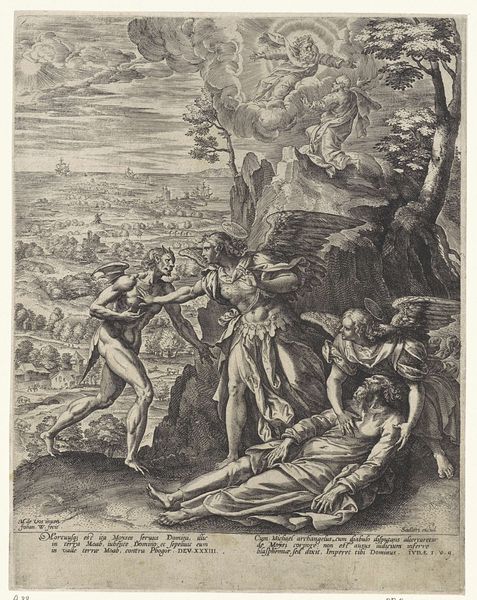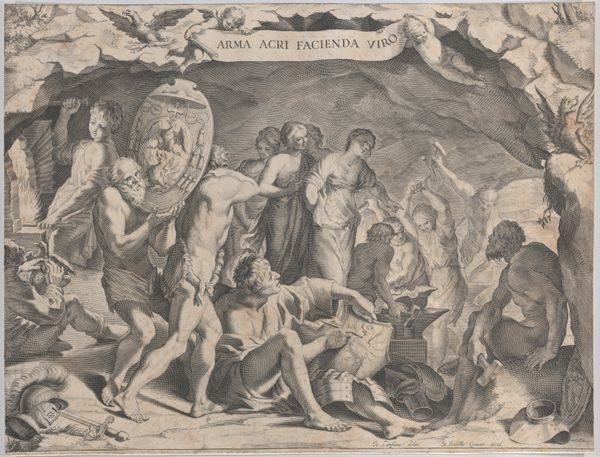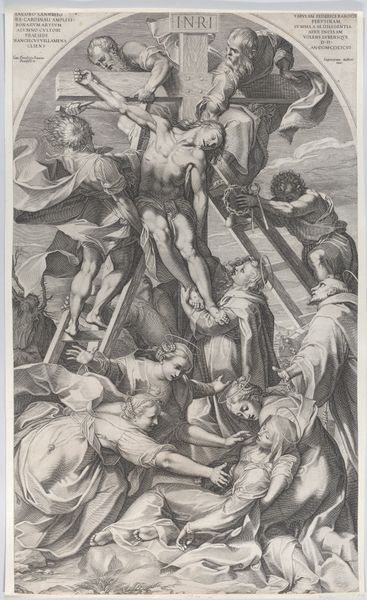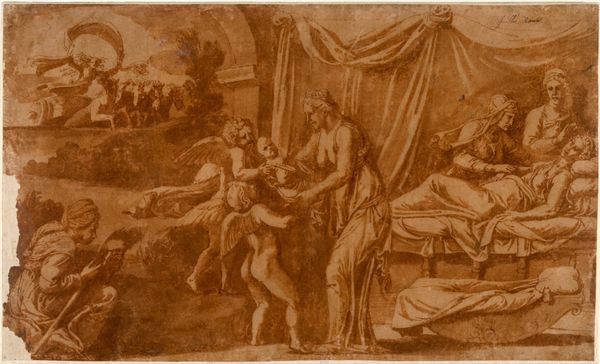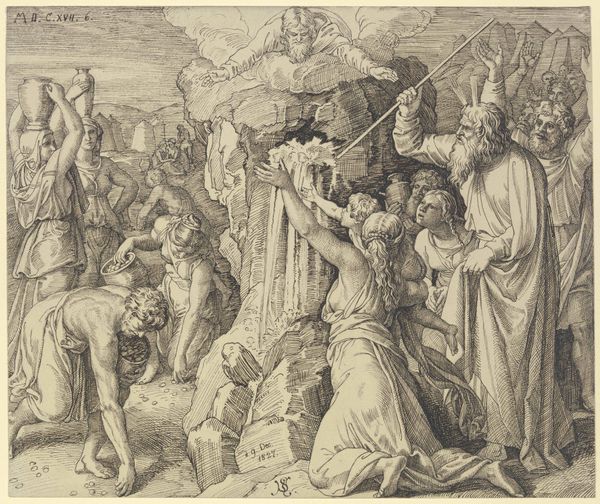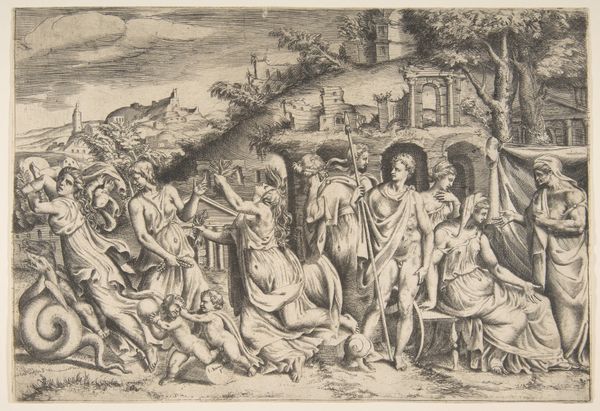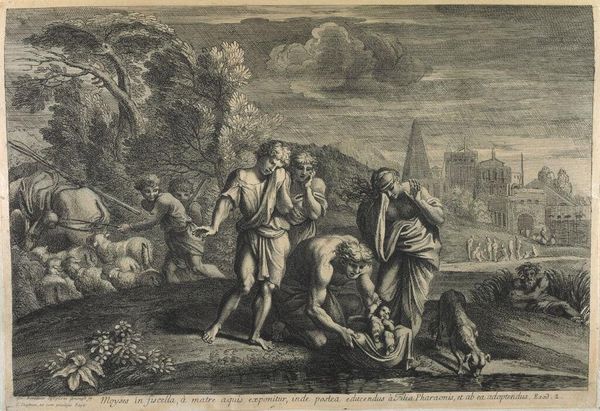
painting, oil-paint
#
narrative-art
#
painting
#
oil-paint
#
landscape
#
figuration
#
oil painting
#
genre-painting
#
history-painting
#
northern-renaissance
#
realism
Dimensions: height 129.4 cm, width 148 cm, thickness 1.5 cm, depth 11 cm
Copyright: Rijks Museum: Open Domain
Isaac Claesz. van Swanenburg painted "Parable of the Weeds among the Wheat", depicting a biblical scene, yet it's deeply rooted in the 16th-century socio-political landscape of the Netherlands. Born in Leiden, Swanenburg lived during the Reformation, a time of religious upheaval and conflict that saw the rise of Protestantism against the Catholic Church. This painting, drawing from Matthew 13, visualizes the judgment between good and evil, wheat and weeds, resonating with the period’s intense moral and spiritual debates. What strikes me is how Swanenburg weaves this parable into the fabric of everyday life. The laborers, their bodies rendered with a raw physicality, are caught in the act of separating the worthy from the unworthy. The emotional weight of this separation, of divine judgment played out in human labor, speaks volumes about the anxieties of the era. This isn't just a religious lesson; it's a reflection on the social body, on who belongs and who is cast out, inviting us to contemplate our own roles within these systems of judgment.
Comments
No comments
Be the first to comment and join the conversation on the ultimate creative platform.



